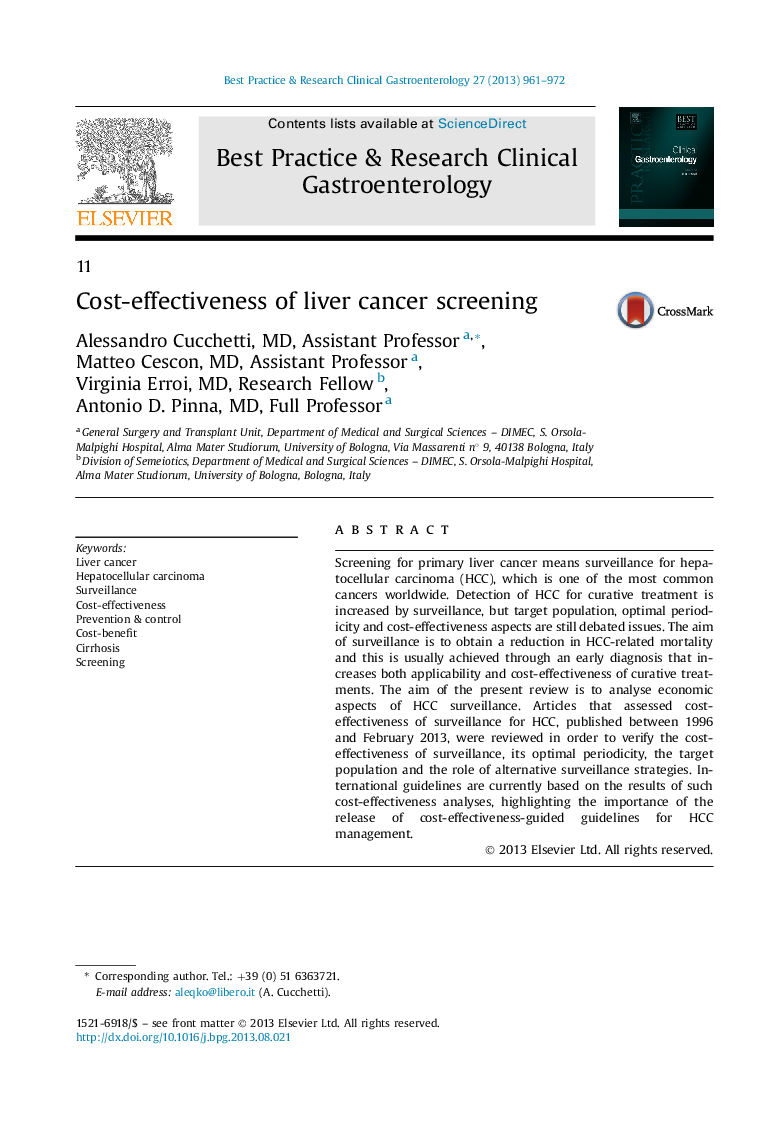| Article ID | Journal | Published Year | Pages | File Type |
|---|---|---|---|---|
| 6086439 | Best Practice & Research Clinical Gastroenterology | 2013 | 12 Pages |
Screening for primary liver cancer means surveillance for hepatocellular carcinoma (HCC), which is one of the most common cancers worldwide. Detection of HCC for curative treatment is increased by surveillance, but target population, optimal periodicity and cost-effectiveness aspects are still debated issues. The aim of surveillance is to obtain a reduction in HCC-related mortality and this is usually achieved through an early diagnosis that increases both applicability and cost-effectiveness of curative treatments. The aim of the present review is to analyse economic aspects of HCC surveillance. Articles that assessed cost-effectiveness of surveillance for HCC, published between 1996 and February 2013, were reviewed in order to verify the cost-effectiveness of surveillance, its optimal periodicity, the target population and the role of alternative surveillance strategies. International guidelines are currently based on the results of such cost-effectiveness analyses, highlighting the importance of the release of cost-effectiveness-guided guidelines for HCC management.
